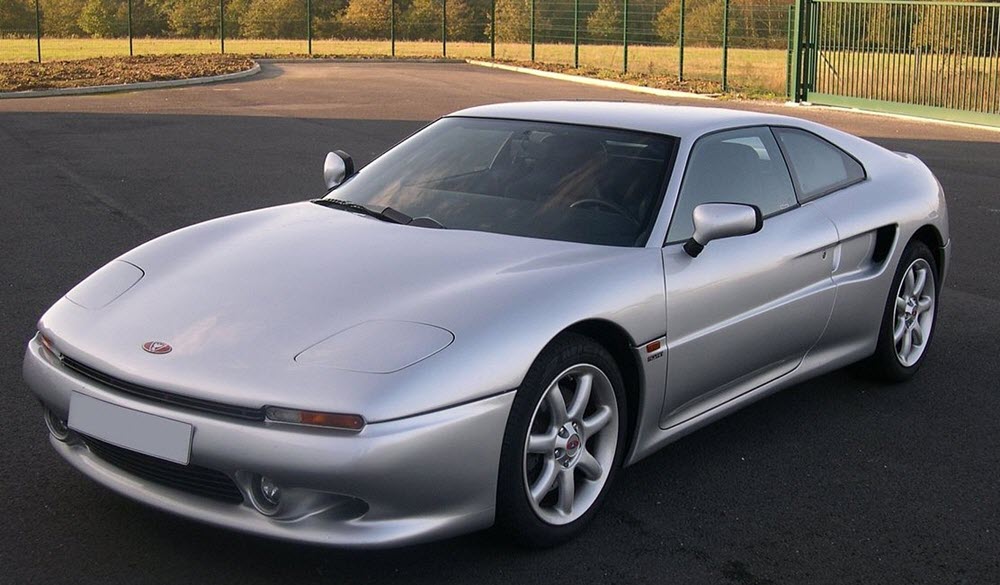Venturi 300
Automobiles Venturi is a French manufacturer of sports cars, created during the early 1980s with the aim of becoming a French counterpart to the Italian Ferrari. The first Venturi car was released in 1984 and for roughly one decade, Automobiles Venturi created mid-engined coupes and roadsters with turbocharged PRV engines and Renault gearboxes. The Automobiles Venturi headquarters is located in Pays de Loire in Coueron, but the company is today owned by a Monaco citizen.

Venturi has built the 1992 chassis for the Larrousse Formula 1 team, and a limited edition 400 GTR from Venturi, built for racing homologation requirements, has participated in the 24 Hour of Le Mans.
When Claude Poiraud and Gérard Godfroy began working on the very first Venturi car, the aim was to create a French car capable of competing with the Italian Ferrari, and other famous European superscars such as the French Bugatti and the German Porsche. It therefore comes as no surprise that high level competition was an imperative part of Venturi marketing. There is for instance the “Venturi Gentlemen Drivers Trophy”, a contest that gathered no less than 75 drivers. Before Claude Poiraud and Gérard Godfroy joined Venturi, they worked as engineers at Heuliez, a French production and design unit that carries out work for various automakers.
Venturi has naturally also participated in a wide range of traditional races and the Venturi team (which included Christophe Dechavanne and Jacques Laffite) received a lot of attention for their brilliant performances in the 1993 24 Hours of Le Mans. The same thing happened when Paul Belmondo raced on the 600 SLM in 1995. True to its original aim of beating Ferrari and Porsche, Venturi has defeated both marques in the BPR Global GT Series on several occasions. The BPR Global GT Series was a ground tourer that ran from 1994 to 1996, when it became the FIAT GT Championship. The aim of the BPR was to bring back endurance racing to Europe, after the demise of the World Sportscar Championship in 1992.
The 400 GT from Venturi is acknowledged as the best performing French car ever, and is also the very first car to feature standard carbon brakes. Despite having a cylinder capacity of two litres, the 400 GT weighed no more than 850 kg. The Atlantique 400GT came with a 400 bhp V6 and was thereby on the same level as the great Ferraris of the early 1990s. The 400GT from Venturi could do 0-60 mph in 4.67 seconds and reach a top speed of 183 mph. The less powerful 300GT from Venturi came with a 310 bhp V6 engine and had a top speed of 175 mph. It could do 0-60 mph in 4.9 seconds.
In 2001, Automobiles Venturi was purchased by Gildo Pallanca from Monaco. Gildo Pallance change the focus to electric powered engines and the creation of the Venturi Fétish model. During recent years, the company has also created the Electric models, which are the first energy-autonomous vehicles in the world. The Electric models are low speed vehicles fitted with solar panels and a wind charger, and can also be plugged in if necessary. Venturi has also developed the Astrolab, the first solar-electric hybrid car in the world.
